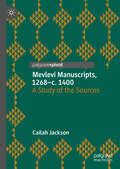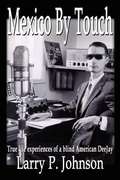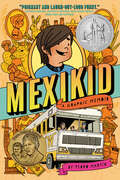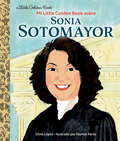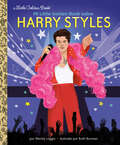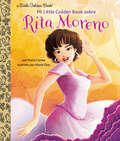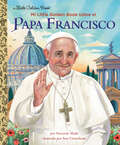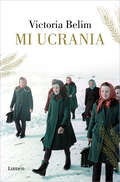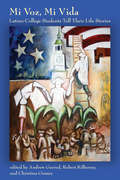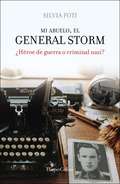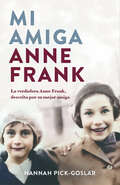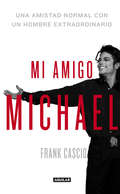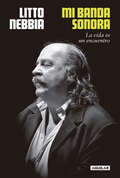- Table View
- List View
Mevlevi Manuscripts, 1268–c. 1400: A Study of the Sources
by Cailah JacksonThis book provides a detailed and carefully researched catalogue of over 140 manuscripts related to the Mevlevi Sufis in their formative period during the thirteenth and fourteenth centuries. It also offers an in-depth and rigorous analysis of the manuscript material, which reveals much about the role of manuscripts in early Mevlevi life, the identity of disciples who were scribes and manuscript owners, and the geographical spread of the Sufi group. The Mevlevi Sufis were one of the most important and prominent socio-religious groups to emerge in late medieval Anatolia, following the Mongol conquests of the 1240s. Sometimes known colloquially as the ‘whirling dervishes,’ the Mevlevis became particularly powerful under Ottoman rule in the early modern period, even counting some sultans as their disciples. However, there is still much to learn about their earliest days, following the death of their ‘patron saint’ Jalal al-Din Rumi in 1273. Rumi is of course also notable as the authorof the Masnavi, an extensive work of Sufi poetry written in rhyming couplets that is the core of Mevlevi ritual and learning. Beyond Mevlevi circles, Rumi remains very popular today as a ‘mystic’ poet. This study sheds new light on the intellectual culture of his time.
Mexican Enough: My Life Between the Borderlines
by Stephanie Elizondo GriestGrowing up in a half-white, half-brown town and family in South Texas, Stephanie Elizondo Griest struggled with her cultural identity. Upon turning thirty, she ventured to her mother's native Mexico to do some root-searching and stumbled upon a social movement that shook the nation to its core. Mexican Enough chronicles her adventures rumbling with luchadores (professional wrestlers), marching with rebel teachers in Oaxaca, investigating the murder of a prominent gay activist, and sneaking into a prison to meet with indigenous resistance fighters. She also visits families of the undocumented workers she befriended back home. Travel mates include a Polish thief, a Border Patrol agent, and a sultry dominatrix. Part memoir, part journalistic reportage,Mexican Enough illuminates how we cast off our identity in our youth, only to strive to find it again as adults -- and the lessons to be learned along the way.
Mexican Hooker #1: And My Other Roles Since the Revolution
by Carmen AguirreCarmen Aguirre has lived many lives, all of them to the full. At age six she was a Chilean refugee adjusting to life as a Latina in North America. At eighteen she was a revolutionary dissident married to a generous-hearted man she couldn't fully love. In her early twenties she fought to find her voice as an actress and to break away from the stereotypical roles thrust upon her--Housekeeper, Hotel Maid, Mexican Hooker #1--all the while navigating the complex paths of lust and heartbreak. As she grew in her career, Aguirre became a writer, a director, an actress, and then a mother, but alongside her many multi-faceted identities was another that was unbearable to embrace yet impossible to escape; that of the thirteen-year-old girl attacked by one of Canada's most feared rapists. Thirty-three years after the assault, Aguirre decided it was time to meet the man who changed her life. Fierce, funny and enlightening, Aguirre interweaves her account of overcoming the attack that shook her world with a host of stories of life and love. From her passionate but explosive relationship with a gorgeous Argentinian basketball player to the all-consuming days at drama school in Vancouver; from the end of the Chilean revolutionary dream to life among the Chicano theatre scene of Los Angeles; from the child who was made the victim of a terrible crime to the artist who found the courage to confront her assailant, Aguirre tells a story of strength and survival that will leave you speechless.
Mexico by Touch: True Life Experiences of a Blind American Deejay
by Larry P. Johnson<P>My memories of Mexico are a montage of flavors, fragrances, sounds and sensations. <P>There's nothing that can compare with the smell and taste of freshly made corn tortillas just before the mid-day meal. Nor are there many sounds more soothing and ethereal than the rippling melodies of a neighborhood marimba band playing a dawn serenade.
Mexifornia: A State of Becoming
by Victor Davis HansonRight-wing political commentator Hanson issues a broadside against Mexican immigration to California. He argues that continued immigration will lead to endemic poverty, eroded schools, soaring crime, and other problems. He presumes to describe the "mental landscape of the alien" describing immigrant life as one of poverty, frustration, envy, and inevitable degeneration. He recommends either cutting off immigration or enforcing rapid assimilation on newly arrived immigrants. Annotation (c)2003 Book News, Inc., Portland, OR (booknews.com)
Mexikid
by Pedro MartínPedro Martín has grown up hearing stories about his abuelito—his legendary crime-fighting, grandfather who was once a part of the Mexican Revolution! But that doesn't mean Pedro is excited at the news that Abuelito is coming to live with their family. After all, Pedro has 8 brothers and sisters and the house is crowded enough! Still, Pedro piles into the Winnebago with his family for a road trip to Mexico to bring Abuelito home, and what follows is the trip of a lifetime, one filled with laughs and heartache. Along the way, Pedro finally connects with his abuelito and learns what it means to grow up and find his grito. <P><P><i>Advisory: Bookshare has learned that this book offers only partial accessibility. We have kept it in the collection because it is useful for some of our members. Benetech is actively working on projects to improve accessibility issues such as these.</i>
Mi Amigo William
by César CostaEste es un simple homenaje a un querido amigo que se fue. Un guerrero que amaba lo que estaba haciendo y se apartó de esta vida en el ejercicio de su función. En este trabajo podrás conocer un poco del chico que conocí, un chico feliz, amigo e incluso un bromista. Según mi visión, podrá conocer algunas de nuestras historias, así como los momentos finales de su vida. Que cada uno lea este trabajo y cambie sus conceptos de relaciones humanas, que no permitamos que la tecnología nos prive del contacto personal, y que ninguno de nosotros pueda estar seguro de la presencia de aquellos a quienes amamos y apreciamos cada minuto de esta vida. Esta edición está revisada y extendida, contiene algunas historias nuevas y detalles de otros casos ya reportados.
Mi Little Golden Book Sobre Sonia Sotomayor (Little Golden Book)
by Silvia LopezHelp your little one dream big with a Spanish language Little Golden Book biography about Supreme Court Justice Sonia Sotomayor! The perfect introduction to nonfiction for preschoolers!This Spanish edition Little Golden Book about Sonia Sotomayor--the first Latina Supreme Court Justice of the United States--is an inspiring read-aloud for young children. Look for Little Golden Book biographies about these other inspiring people:• Joe Biden• Kamala Harris• Barack Obama• Queen Elizabeth II • Dr. Fauci • Ruth Bader Ginsburg• Martin Luther King Jr.• George Washington• Abraham Lincoln
Mi Little Golden Book sobre Frida Kahlo (Little Golden Book)
by Silvia LopezUna biografía Little Golden Book acerca de la pintora mexicana Frida Kahlo, escrita para niños de edad preescolar. Este Little Golden Book capta la esencia de Frida Kahlo para los más pequeños lectores. Desde como superó enfermedades, fue una de pocas niñas admitidas a su escuela en México, y alcanzó a ver sus pinturas expuestas en museos, el libro sirve de inspiración a futuros pioneros, así como a sus padres. Presenta un informativo texto e ilustraciones llenas de colorido inspiradas por el arte de Frida.A Little Golden Book biography of Mexican artist Frida Kahlo, written for preschoolers.This Little Golden Book captures the essence of Frida Kahlo for the youngest readers. From overcoming illness, to being one of only a handful of girls at her school in Mexico, to having her paintings hanging in museums, this is an inspiring read for future trailblazers and their parents! Features informative text and colorful illustrations inspired by Frida's own artwork.
Mi Little Golden Book sobre Harry Styles (Little Golden Book)
by Wendy LoggiaSueña en grande con una biografía Little Golden Book sobre el cantante superestrella, actor e ícono de la moda, Harry Styles. Las biografías de Little Golden Book son la introducción perfecta a la no ficción para lectores jóvenes, ¡así como para fanáticos de todas las edades!Este pequeño Little Golden Book sobre Harry Styles, el artista de fama mundial que comenzó en el concurso de canto The X Factor y como miembro de la banda One Direction, ¡es una historia inspiradora para todos los fans de Harry!Busque más biografías Little Golden Book: • The Beatles • Beyoncé • Lady Gaga • Taylor Swift • Dolly PartonDream big with a Little Golden Book biography about superstar singer, actor, and fashion icon, Harry Styles. Little Golden Book biographies are the perfect introduction to nonfiction for young readers—as well as fans of all ages!This Little Golden Book about Harry Styles—the world famous performer who got his start on the singing competition show The X Factor, and as a member of One Direction—is an inspiring read-aloud for all Harries!Look for more Little Golden Book biographies: • The Beatles • Beyoncé • Lady Gaga • Taylor Swift • Dolly Parton
Mi Little Golden Book sobre Lionel Messi (Little Golden Book)
by Roberta Ludlow¡Ayuda a tu niño a soñar en grande con esta biografía en español sobre el futbolista argentino Lionel Messi de Little Golden Book! ¡Las biografías de Little Golden Book representan la introducción perfecta a los libros no-ficción para lectores jóvenes, ¡así como entusiastas de todas las edades!Help your little one dream big with this Spanish language Little Golden Book biography about Argentine professional footballer Lionel Messi! Little Golden Book biographies are the perfect introduction to nonfiction for young readers!Este Little Golden Book sobre Lionel Messi —el delantero y jugador estrella de Argentina, FC Barcelona, Paris Saint-Germain, y Inter Miami quien es ampliamente reconocido como uno de los mejores jugadores de fútbol de todos los tiempos— es una inspiradora historia para narrar en voz alta a los pequeños lectores.This Little Golden Book about Lionel Messi--the record-smashing star forward for Argentina, FC Barcelona, and Paris Saint-Germain who is widely regarded as one of the greatest soccer players of all time--is an inspiring read-aloud for young readers.Look for more Little Golden Book biographies:Simone BilesJackie RobinsonMisty Copeland
Mi Little Golden Book sobre Rita Moreno (Little Golden Book)
by Maria CorreaAyude a su pequeño a soñar en grande con una biografía Little Golden Book sobre la actriz, cantante y bailarina Rita Moreno, ganadora del EGOT. ¡Las biografías de Little Golden Book representan la introducción perfecta a los libros no-ficción para los niños en edad preescolar!Help your little one dream big with a Little Golden Book biography about EGOT-winning actor, singer, and dancer, Rita Moreno. Little Golden Book biographies are the perfect introduction to nonfiction for preschoolers!Este pequeño Little Golden Book sobre Rita Moreno, estrella puertorriqueña de West Side Story y primera latina en ganar un Oscar, es una historia inspiradora para niños pequeños, así como para sus padres y abuelos que la admiran.Otras biografías Little Golden Book en español:Mi Little Golden Book sobre Frida KahloMi Little Golden Book sobre Sonia SotomayorThis Little Golden Book about Rita Moreno—Puerto Rican-born star of West Side Story and the first Latina to win an Oscar—is an inspiring read-aloud for young children, as well as their parents and grandparents who are fans.Look for these other Spanish language Little Golden Book biographies:Mi Little Golden Book sobre Frida KahloMi Little Golden Book sobre Sonia SotomayorLook for more Little Golden Book biographies: • Betty White • Carol Burnett • Lucille Ball • Harry Belafonte • Julie Andrews • Dwayne Johnson
Mi Little Golden Book sobre Selena (Little Golden Book)
by Maria CorreaAyude a su pequeño a soñar en grande con una biografía Little Golden Book sobre la cantante famosa que ganó el premio Grammy y la reina de la música tejana, Selena. Las biografías de Little Golden Book son la introducción perfecta a la no ficción para lectores jóvenes, ¡así como para fanáticos de todas las edades!Help your little one dream big with a Little Golden Book biography about the Grammy Award winning, Queen of Tejano Music Selena. Little Golden Book biographies are the perfect introduction to nonfiction for young readers—as well as fans of all ages!Este pequeño Little Golden Book sobre Selena Quintanilla, una cantante Americana mexicana que era muy famosa por su impacto en la cultura y la música tejana, es una historia inspiradora para niños pequeños, así como para sus padres y abuelos que la admiran.This Little Golden Book about Selena Quintanilla—the Grammy Award winning Mexican American singer who became known as the beloved icon of Tejano music and culture—is an inspiring read-aloud for young children, as well as their parents and grandparents who are fans.Look for more Little Golden Book biographies:Frida KahloRita MorenoBeyoncéTaylor SwiftLady Gaga
Mi Little Golden Book sobre Taylor Swift (Little Golden Book)
by Wendy LoggiaAyude a su pequeña o pequeño a soñar en grande con esta biografía en español sobre Taylor Swift, la artista multiplatino y ganadora del premio Grammy. Las biografías de Little Golden Book son la introducción perfecta a la no ficción para lectores jóvenes, ¡así como para fanáticos de todas las edades! "Imprescindible para cualquier colección de Taylor Swift". —Rolling Stone¡Este Little Golden Book sobre Taylor Swift, la cantante y compositora cuyo talento distintivo para contar historias la ha convertido en una de las superestrellas más famosas de la música country y pop, es tan inspirador para los niños pequeños como para sus padres Swiftie!Busca biografías Little Golden Book sobre: • Lady Gaga • Beyoncé • Dolly Parton • Elton JohnHelp your little one dream big with a Little Golden Book biography about Taylor Swift, the Grammy Award–winning and multiplatinum artist. Little Golden Book biographies are the perfect introduction to nonfiction for young readers—as well as fans of all ages!"A must-have for any Taylor Swift collection." —Rolling StoneThis Little Golden Book about Taylor Swift--the singer and songwriter whose distinctive talent for storytelling has made her one of the biggest superstars in both country and pop music--is an inspiring read-aloud for young children as well as their Swiftie parents!Look for more Little Golden Book biographies: • Lady Gaga • Beyoncé • Dolly Parton • Elton John
Mi Little Golden Book sobre el Papa Francisco (Little Golden Book)
by Suzanne Slade¡Sueña en grande con una biografía Little Golden Book sobre el Papa Francisco! La introducción perfecta a la no ficción para lectores jóvenes, ¡así como para fanáticos de todas las edades!Este Little Golden Book sobre el Papa Francisco, líder de la Iglesia Católica Romana y primer Papa de América Latina, es una biografía inspiradora para niños pequeños.Busque más biografías Little Golden Book: • Reina Elizabeth II • Rey Charles III • Barack Obama • Dr. Jonas Salk • Harriet TubmanDream big with a Little Golden Book biography about Pope Francis! The perfect introduction to nonfiction for young readers—as well as fans of all ages!This Little Golden Book about Pope Francis--the head of the Roman Catholic Church and the first Pope from South America--is an inspiring read-aloud for young children. Look for more Little Golden Book biographies: • Queen Elizabeth II • King Charles III • Barack Obama • Dr. Jonas Salk • Harriet Tubman
Mi Ucrania
by Victoria BelimLa historia de Ucrania contada a través de una apasionante saga familiar, que recuerda el impacto de Unorthodox, Todo está iluminado o La octava vida «Victoria Belim ha conseguido compartir un pedazo de Ucrania de la forma más conmovedora y personal».Dorotea Bromberg, editora de Brombergs Forlag (Suecia) En 2014, Vika regresa a su Ucrania natal para investigar un misterio familiar: cómo murió su tío bisabuelo Nikodim en la década de 1930 y por qué su historia sigue siendo tabú casi un siglo después. Aunque desentrañar viejas incógnitas siempre resulta complicado, no había previsto que la resistencia más fuerte la encontraría en su abuela Valentina, que le prohíbe remover el pasado. No en vano, Ucrania es «tierra de sangre», como sus vecinos Polonia, Bielorrusia, Rusia y los países bálticos. En la región de Poltava, donde residió la familia, el KGB desapareció hace ya mucho, pero su antiguo cuartel general todavía aterroriza a los lugareños. Mientras el país se sumerge en un nuevo conflicto con Rusia tras la anexión de Crimea, el lector acompaña a Vika en los temidos archivos de la policía secreta de la antigua URSS en busca de la verdad sobre el pasado del país y sobre Nikodim, incluso a riesgo de un enfrentamiento directo con su familia. Entre el memoir y la novela detectivesca, esta obra conjuga su enorme carga emocional con un lúcido análisis de la historia. Al tiempo que Victoria Belim terminaba esta novela sobre una Ucrania que intentaba hacer las paces con su pasado y fl orecer, su tierra natal se enfrentaba de nuevo al dolor de otra cruel guerra. Los editores internacionales han dicho:«Atrapa pensamientos, formas, texturas, sabores, olores y colores que hacen estallar la imaginación. Además de un presagio de la pesadilla actual, este libro es, en esencia, una historia de amor y esperanza».Michel van der Waart, editor de Arbeiderspers (Holanda) «Leí Mi Ucrania de una sentada y me dejó completamente impresionada. No he podido dejar de pensar y hablar sobre este libro. Es admirable cómo Victoria consigue arrastrar al lector dentro de la trama».Friederike Schilbach, editora de Aufbau (Alemania) «Me dejó sin respiración. Una de las mejores autobiografías del año».R. Tomaszewska, Virago (Reino Unido) «Pronto me di cuenta de que me encontraba ante algo más grande y ambicioso; sin lugar a dudas, necesario, un texto que va más allá de la tragedia actual y conecta Ucrania y Rusia a lo largo de la historia».I. Fernández, Enciclopèdia (Cataluña) «Una cautivadora y conmovedora historia familiar que al mismo tiempo explora en profundidad la historia de la Ucrania moderna. Es exactamente lo que necesitamos leer ahora mismo».M. Kleve, Aschehoug (Noruega)
Mi Vida
by Kwasi AttaEste es un vívido relato de la vida del autor. Nada en este libro es ficticio. La historia nos revela su vida académica desde la primaria y hasta su ingreso a la universidad. Sus debilidades, desafíos, fortalezas y victorias se encuentran plasmados en esta narrativa.
Mi Vida Loca: The Crazy Life of Johnny Tapia
by Johnny Tapia Bettina GiloisMy life's been pretty tragic, Tapia recollects. But in the ring, it's been a blessing. Mi Vida Loca is not just a nickname for Tapia, but a legendary tale of a life lived over the edge and back. There is only one winner in boxing. Fighting against your opponent and fighting against your own inner demons become one in the same. Those who survive both in and out of the ring are beloved worldwide. Those who do not, spiral downward into drugs, prison, and even murder. This is the true-life, stranger-than-fiction story of venerated boxing champion Johnny Tapia. With a global cult following, Tapia is well-known as a colorful figure in the boxing industry. His life and career glittered with championship belts and smudged by a dark past, Tapia recounts in Mi Vida Loca the tragic childhood events that led him to a lifelong battle with drugs, depression, and even attempted suicide. Through the flames of his raging internal struggle, a fierce warrior of the ring was born. He turned his life around with the help of his wife and manager, Teresa Tapia, kicking his habit for good. Today, he has fought harder than ever against some of boxing's greatest champs his triumph over himself being his greatest victory of all.
Mi Voz, Mi Vida
by Andrew Garrod Robert Kilkenny Christina GómezAmid the flurry of debates about immigration, poverty, and education in the United States, the stories in Mi Voz, Mi Vida allow us to reflect on how young people who might be most affected by the results of these debates actually navigate through American society. The fifteen Latino college students who tell their stories in this book come from a variety of socioeconomic, regional, and family backgrounds-they are young men and women of Mexican, Puerto Rican, Cuban, Dominican, Central American, and South American descent. Their insights are both balanced and frank, blending personal, anecdotal, political, and cultural viewpoints. Their engaging stories detail the students' personal struggles with issues such as identity and biculturalism, family dynamics, religion, poverty, stereotypes, and the value of education. Throughout, they provide insights into issues of racial identity in contemporary America among a minority population that is very much in the news. This book gives educators, students, and their families a clear view of the experience of Latino students adapting to a challenging educational environment and a cultural context-Dartmouth College-often very different from their childhood ones.
Mi Voz, Mi Vida: Latino College Students Tell Their Life Stories
by Andrew Garrod Robert Kilkenny Christina GomezGarrod (education, Dartmouth College), Kilkenny (social work, Simmons College, Boston), and Goméz (sociology and Latino studies, Northeastern Illinois U. , Chicago) present a collection of 15 first-person narratives by Latino college students, aged 18 to 22, who attended Dartmouth; all but one of the essays was written within the last four years. The authors reflect on formative relationships and influences, life-changing events, and factors that helped shape their values, educational outcomes, and sense of personal identity. The text does not focus on Dartmouth per se or on its educational impact on the students, but rather on their evolving lives and Latino identities. The contributions are grouped into four major themes from the essays-- resilience, biculturalism, mentoring, and identity. For educators, college administrators, students and their families.
Mi abuelo, el general Storm: ¿Héroe o criminal nazi?
by Silvia FotiTras crecer bajo la sombra de un abuelo heroico y reconocido por sus acciones en la rebelión lituana contra el comunismo, la autora se da a la tarea de escribir un libro biográfico, con la idea de que esté engrandecerá el recuerdo de su familia y el rol que el General Noreika jugó en su país natal.Después de una primera visita a Europa, la autora descubre un rumor perturbador: su abuelo participó en la matanza de judíos en su país natal. En este momento la biografía toma un giro: no sólo debe engrandecer el legado de su abuelo, sino además exonerarlo de estas terroríficas acusaciones. Le tomó 13 años, dos maestrías y largas temporadas en Europa llegar a la verdad. Sus investigaciones no sólo demuestran que Noreika participó conscientemente en la matanza de miles de judíos, sino que estaba de acuerdo con que esta etnia representaba un grave peligro para su país en ese momento.
Mi amiga Anne Frank: La verdadera Anne Frank, descrita por su mejor amiga
by Hannah Pick-GoslarLas conmovedoras memorias de Hannah Pick-Goslar, superviviente del holocausto, la mejor amiga de Anne Frank. Una mirada íntima a sus vidas y a su amistad. Con cinco años, Hannah Pick-Goslar huyó con su familia a Ámsterdam para escapar de la Alemania nazi. El primer día de cole allí, entabló amistad con una niña extrovertida y avispada llamada Anne Frank. Durante unos años maravillosos las dos fueron inseparables y disfrutaron de tranquilas fiestas de pijamas y juegos infantiles en el barrio de Rivierenbuurt.Sin embargo, un día de 1942 las vidas de ambas cambiaron para siempre. La ocupación nazi se intensificó y de pronto Anne y su familia desaparecieron. Mientras Hannah se preguntaba por el paradero de su amiga, el destino de su propia familia tomó un nuevo rumbo: los arrestaron y enviaron a Westerbork, un campo de tránsito, antes de transportarlos a Bergen-Belsen. En este campo de concentración, rodeada de muerte y de miseria, Hannah recibió noticias asombrosas de su amiga y no dudó en poner su vida en peligro para ayudarla.«De niña vi al mundo que amaba desmoronarse y desaparecer, vi cómo un odio sin sentido lo destruía y, junto a él, a mi mejor amiga Anne». En este relato lleno de esperanza, fuerza y resistencia, Hannah Pick-Goslar narra una historia de supervivencia y un testimonio inolvidable sobre el poder eterno de la amistad, el amor y la memoria. Reseñas:«La historia de Hannah concluye la que Anne no pudo terminar. Te parte el corazón, pero a la vez es un canto a la vida y cuenta una verdad que ahora mismo necesitamos más que nunca».Dra. Edith Eva Eger, autora de La bailarina de Auschwitz «Un relato insólito sobre el amor, la pérdida y el poder de la amistad en los momentos más aciagos.Este libro, al igual que su autora, es un complemento imprescindible de la vida de Anne Frank».Jack Fairweather, autor de El voluntario, galardonado con el Premio Costa «Hannah Pick-Goslar describe los momentos alegres de su amistad con Anne Frank y las terribles circunstancias que vivieron bajo el régimen nazi… Un relato devastador sobre el Holocausto».Time Magazine «Una amistad hermosa y compleja».New York Post «Sin duda, Hannah Pick-Goslar tiene una historia que contar, y lo hace con gran claridad y convicción. Su experiencia se parece a la de Anne Frank en muchos aspectos».Washington Post
Mi amigo Michael: Una amistad normal con un hombre extraordinario
by Cascio, FrankTodo el mundo conoce a Michael Jackson como mito de la música. Ésta es la verdadera historia de su vida sólo como hombre. Para Frank Cascio Michael Jackson ha sido muchas cosas: su segundo padre, su hermano mayor, su jefe, su mentor, su profesor y, por encima de todo esto, su amigo. Cuando lo conoció, Michael Jackson estaba en la cima de su carrera musical. Él era apenas un niño, pero a partir de ese momento Michael Jackson pasó a ser el centro de su vida y así fue durante veinticinco años. Frank ha sido su confidente todo este tiempo. Jamás ha hablado de los incidentes y de los escándalos que salpicaron la vida del artista, nunca ha hecho pública su relación con Michael ni los secretos que le guardaba. Por primera vez desde la muerte del Rey del Pop rompe su silencio para que conozcamos de primera mano toda la verdad sobre Michael Jackson, un hombre eclipsado por su leyenda. En Mi amigo Michael Frank Cascio responde a los rumores, a las mentiras y a las acusaciones que se han vertido sobre Michael Jackson en los últimos tiempos y describe las peculiaridades de su estilo de vida, las polémicas sobre su sexualidad y nos ofrece un retrato minucioso de la complejidad de la personalidad del Rey del Pop, sus pasiones y sus excentricidades. Una mirada amable y sincera sobre un hombre extraordinario, una nueva forma de descubrir al mito. «Conocer a Michael fue una experiencia extraordinaria y normal a la vez. Desde el principio supe que era una persona especial, distinta, un visionario. Era mi amigo, mi familia».Frank Cascio
Mi banda sonora: La vida es un encuentro
by Litto NebbiaBiografía, opiniones, recuerdos y anécdotas del pionero del rock nacional Litto Nebbia, que cuenta con su voz personalísima historias y escenas de su vida, a cincuenta años de la creación de "La Balsa". «Una bella lección de pureza y de lucidez de conceptos frente al concierto cultural, una toma de conciencia para hacernos más puros y fuertes mientras leemos la historia, el recuerdo y la convicción del autor.» Andrés Calamaro Apasionado y muchas veces polémico, Litto Nebbia cuenta todo. A cincuenta años de "La balsa", el pionero del rock nacional ha sido el primero en no tener ningún prejuicio con los géneros musicales, cruzando el rock con el jazz, la música popular brasileña, el folklore, el bolero, y animándose a aventuras nunca antes atravesadas. Tan inclasificable como su autor, Mi banda sonora enhebra, como un soundtrack, las escenas de su propia historia de vida, las de sus discos y canciones, sus amigos, sus películas y compositores favoritos, sus giras y sus opiniones personalísimas. Algunos de los temas más famosos, que han marcado la historia del rock nacional, pasan por estas páginas: "El rey lloró", "Viento, dile a la lluvia", "Rosemary", "El otro cambio, los que se fueron", "Nueva zamba para mi tierra", "Quien quiera oír que oiga" y "Sólo se trata de vivir". Y con ellos, miles de recuerdos, sueños y pasiones convierten a este libro en una obra que se proyecta al futuro.
Mi camino
by María Eugenia Vidal«Yo creo que es mejor tomar otro camino, más difícil, más largo, menos popular: el camino de tratar de entender al otro, de escuchar en serio en lugar de dar una respuesta automática, de querer que la sociedad elija por convicción, no porque el otro es malo, sino porque nosotros somos mejores, aun cuando eso suponga un riesgo. Esto es para mí la política».María Eugenia Vidal «La gente nos demanda más humildad, nos demanda un proyecto en serio, nos demanda que la política no sea un lugar oscuro donde es difícil encontrar grandeza y generosidad, sino un lugar transformador, donde se puede cambiar la realidad. No son cambios fáciles para la política ni para la sociedad. No hay una sino muchas grietas construidas desde la desconfianza en el otro y desde la comodidad que otorga el prejuicio: es mucho más fácil hacer política si hay buenos y malos. Corruptos y honestos. Neoliberales y populistas. Ricos y pobres. Indiferentes y sensibles.Esta actitud nos trajo hasta acá y nos hace volver una y otra vez al mismo lugar. Yo creo que es mejor tomar otro camino, más difícil, más largo, menos popular: el camino de tratar de entender al otro, de escuchar en serio en lugar de dar una respuesta automática, de querer que la sociedad elija por convicción, no porque el otro es malo, sino porque nosotros somos mejores, aun cuando eso suponga un riesgo. Esto es para mí la política».María Eugenia Vidal
